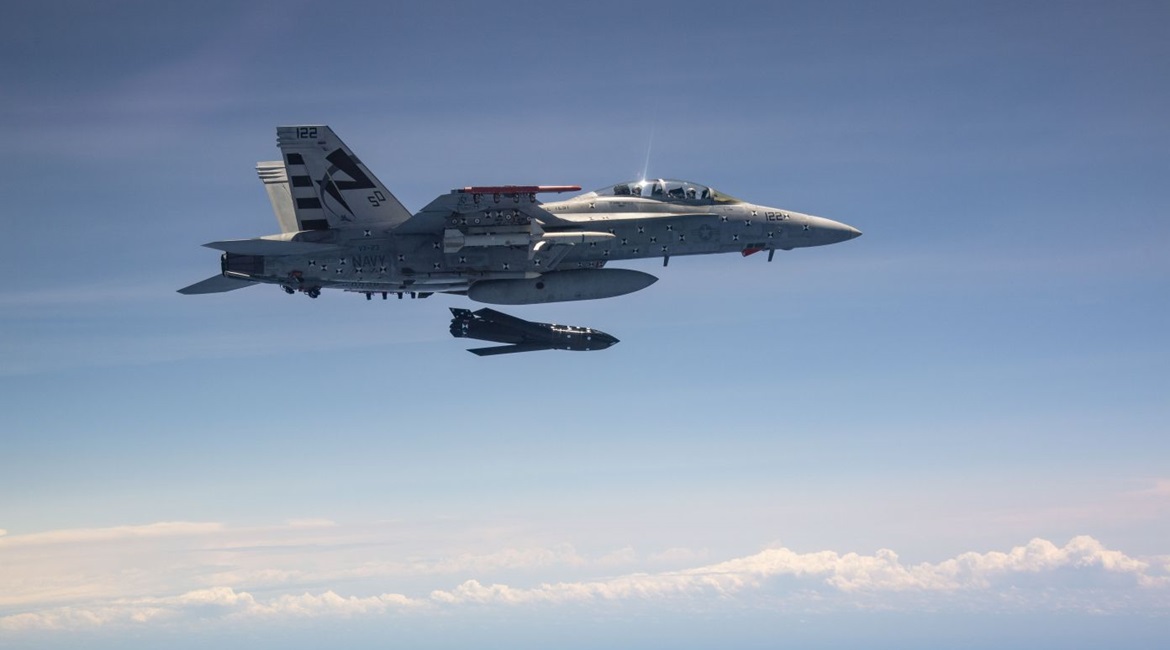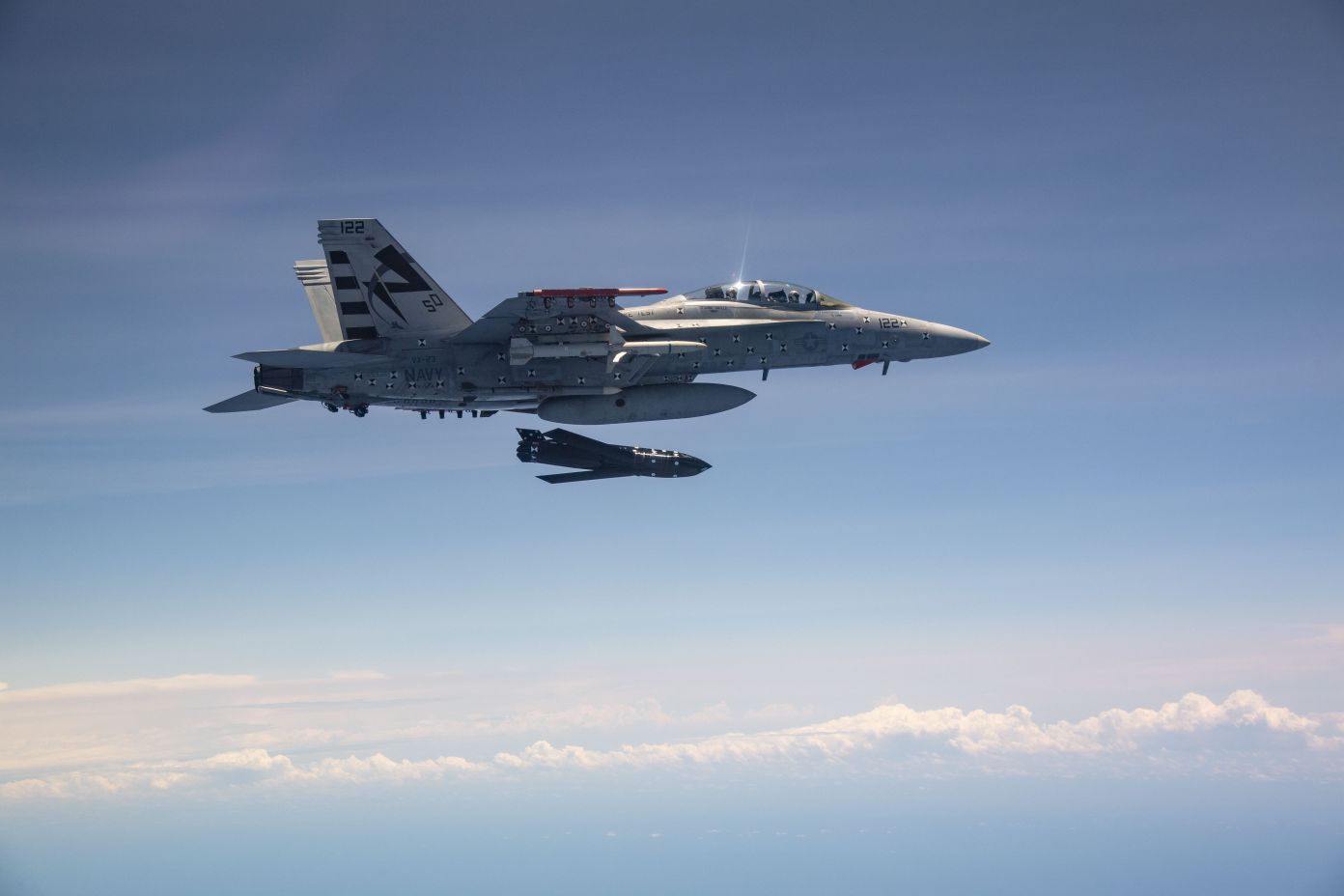
The US Navy (USN) has declared an early operational capability (EOC) for the Lockheed Martin AGM-158C Long-Range Anti-Ship Missile (LRASM) on the F/A-18E/F Super Hornet carrier-borne strike fighter.

A LRASM is launched from an F/A-18E/F Super Hornet during testing. EOC on the F/A-18E/F was achieved in November 2019. (NAVAIR)
This milestone, achieved in November, follows the declaration of EOC for LRASM on the US Air Force’s B-1B Lancer bomber in December 2018.
The joint service LRASM Deployment Office (LDO) and Lockheed Martin have developed LRASM as an air-launched, precision-guided anti-ship weapon to meet the Offensive Anti-Surface Warfare (OASuW) Increment 1 requirement. Derived from the AGM-158B Joint Air-to-Surface Standoff Missile Extended Range air-launched cruise missile, LRASM introduces a multi-mode sensor suite, a weapon data link, and enhanced digital anti-jam GPS to support precision routing, guidance, and terminal homing in all weather conditions, day or night.
The sensor/seeker package combines a passive radio frequency long-range sensor (developed by BAE Systems) for wide-area target acquisition and an imaging infrared seeker for terminal targeting. Navigation to the target is enabled by an integrated jam-resistant GPS and a navigation-grade inertial measurement unit (Lockheed Martin calls the weapon “GPS-enabled, not dependent”). The weapon data link enables in-flight target updates to ‘collapse’ the search area.
LRASM integration activity on the F/A-18E/F began in the first half of 2015 with transonic wind tunnel testing at the Arnold Engineering Development Complex to capture data to inform safe and controllable store separation. Missile load and fit checks using a LRASM mass simulator vehicle followed in August 2015 at Naval Air Station (NAS) Patuxent River’s Air Test and Evaluation Squadron 23 facility.
Looking to read the full article?
Gain unlimited access to Janes news and more...




